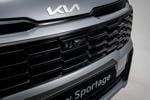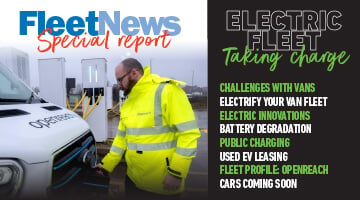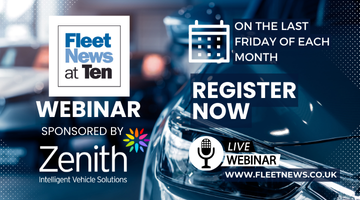Dashboards are another relatively new feature, allowing you to log-in and see problem areas at a glance, such as a vehicle approaching its contracted total mileage.
Jon Tandy, business development manager at Mycompanyfleet, says this “helps cut down dramatically on time”.
Dashboards are also configurable. “Once a target has been achieved you can change the dashboard to focus on another KPI,” Goodstadt says.
Here is a screenshot of a Mycompanyfleet dashboard

Can you tailor your existing system?
Talk to your provider about adding certain modules to your existing system rather than upgrading to an entirely new one. Tranman’s automatic email functionality, for instance, is a ‘minor release’ that can be easily added.
Also see whether tweaks, such as removing fields, can be made.
“All of the systems out there now are generally flexible enough for you to change the way they work,” Goodstadt says. “When I review customers’ systems they are often entering information that is no longer required. Removing those fields can often make the task simpler and quicker.”
Helping customers to get the most out of their existing systems is an approach CFC Solutions has also been taking.
Neville Briggs, managing director at CFC Solutions, says most fleet managers don’t use fleet software to its full potential.
“Contact your existing supplier and ask them how your software can be used to do more,” he says. “This is especially important if you are trying to achieve something in particular. In many cases, your provider will be able to show you how to achieve this with your existing system.”
How much will it cost to upgrade?
Cost will depend on fleet size and what software modules you currently use.
“It could be anything from £3,000 for a small fleet which is only using part of the system to £15,000,” Goodstadt says.
Ashley Sowerby, managing director of Chevin Fleet Solutions, adds: “There’s no set price for Fleetwave as it’s priced based on individual requirements. We do work on a combined ‘per asset’ and licence fee model so the smaller the fleet operation, the smaller the investment.”
In theory, the cost of an upgrade should be more than covered by the savings the system brings.
“It’s a difficult subject but often being able to cut back on the number of staff is where the savings come from,” Goodstadt says. Being able to integrate systems allowed Carillion, one of Civica’s customers, to reduce staff numbers from 50 to eight.
Sowerby adds that for large or complex fleets there is significant return on investment from the removal of manual report production alone.
When Thames Water made the case for upgrading, Nasr demonstrated the efficiencies the new system would bring as well as the risks of continuing with the current one. “One of the risks was that we didn’t have a whole view of the fleet,” she says. “The commercial fleet was on Tranman but we didn’t have the driver module so the car fleet was on a spreadsheet.
“Fixed penalties were also on another spreadsheet and we had another system for short-term hire. We needed to streamline our processes.”
It may be possible to make minor changes at no extra cost.
“People are still in the mindset where 10 years ago if you wanted to change something you had to spend,” Goodstadt says. “If you want a new field – CO2 against a vehicle, for example – you might have paid £500 to £600 but today we can do it free and it takes 20 minutes.”
Some providers do major upgrades as part of their maintenance fee.


















Login to comment
Comments
No comments have been made yet.